Charles B. Wheeler Downtown Airport
Introduction
Text-to-speech Audio
Built in 1927, this small municipal airport was once deemed the “Air Hub of America.” After nearly losing U.S. Army services that were operated from a small airport located several miles out of city limits, Chamber of Commerce president Lou Holland encouraged a new airport that could also serve as an airmail station and aid in the city’s booming economy. Leaders decided that the empty field on the peninsula at the confluence of the Missouri and Kansas Rivers was an ideal location because of its proximity to downtown and rail transportation. Famed aviator Charles Lindbergh dedicated Municipal Airport on August 17, 1927. The airport served as a base of operations for Kansas City-based Trans World Airlines and offered commercial air service until Kansas City International Airport was built in 1972. The airport was renamed in 2002 in honor of prominent Kansas Citian Charles Wheeler and serves private and small business traffic.
Images
The second terminal built at Kansas City Municipal Airport c.1940s pictured with a TWA plane. Courtesy of Missouri Valley Special Collections, Kansas City Public Library, Kansas City, Missouri.
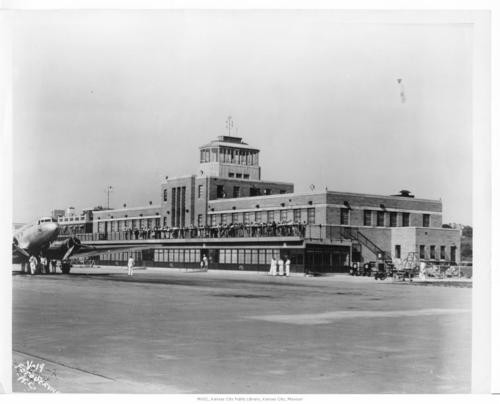
A photo of New Richards Field c.1927, the site of Kansas City Municipal Airport. Courtesy of Missouri Valley Special Collections, Kansas City Public Library, Kansas City, Missouri.

Charles Lindbergh's the "Spirit of St. Louis" on New Richards Field at the dedication of Municipal Airport on August 17, 1927. Note the rough terrain and large crowd in the background. Courtesy of Missouri Valley Special Collections, Kansas City Public Library, Kansas City, Missouri.
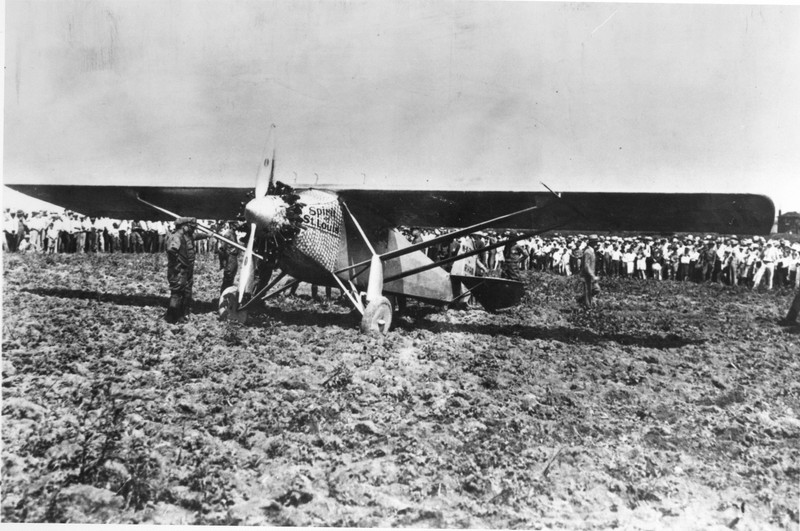
A map featured in an early pamphlet for Municipal Airport shows the city limits and location of the airport. Courtesy of the State Historical Society of Missouri via PendergastKC.
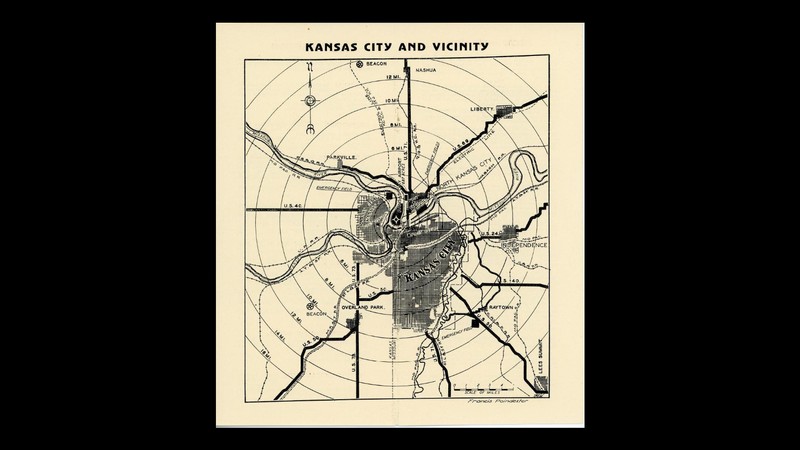
An early aerial photo of Kansas City Municipal Airport. Courtesy of Missouri Valley Special Collections, Kansas City Public Library, Kansas City, Missouri.
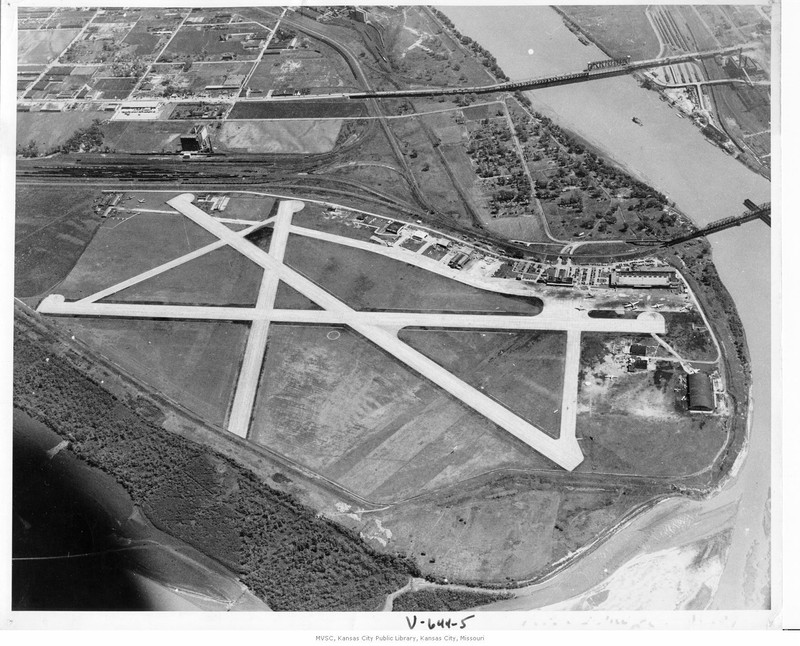
An aerial view of the Kansas City Municipal Airport c.1960s, located on a peninsula formed by the Missouri River. Note the development of the surrounding area. Courtesy of Missouri Valley Special Collections, Kansas City Public Library, Kansas City, Missouri.
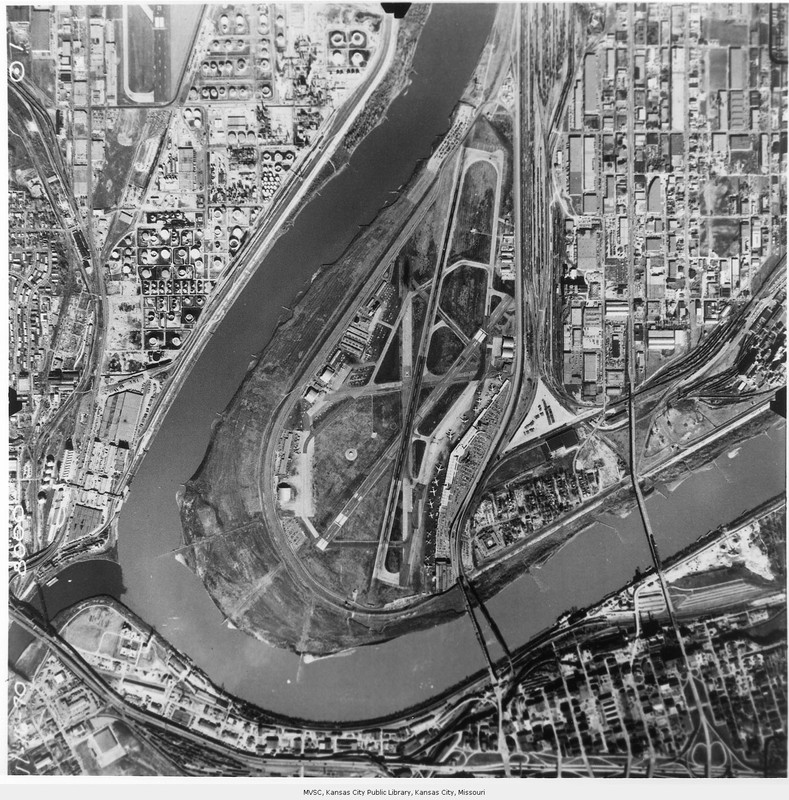
A historical marker placed in honor of Charles B. Wheeler at the Downtown Airport.

King speaking to Kansas City civil rights activist Chester Owens, Jr. (left) and Clyde Townsend (right) at the airport in 1968
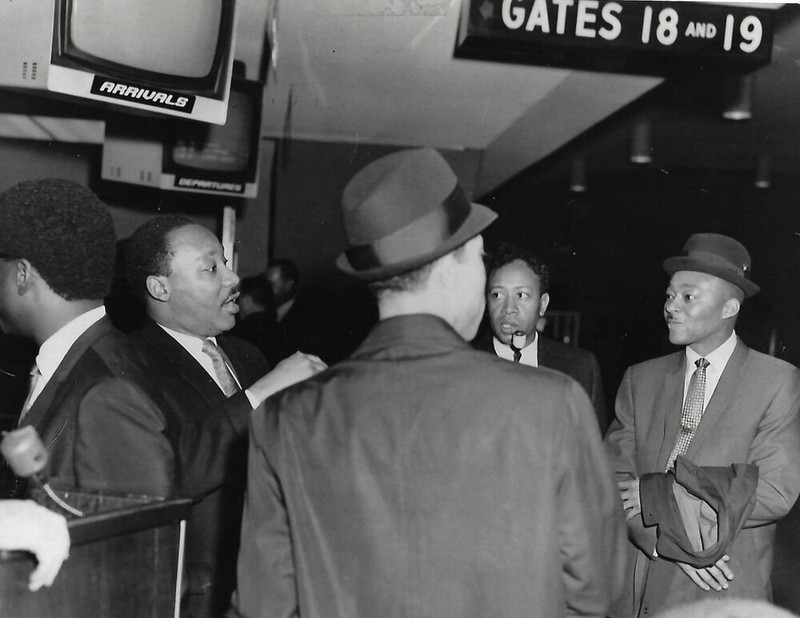
Backstory and Context
Text-to-speech Audio
American aviation first took flight in 1903 and advanced over the next two decades for use primarily as a military tool and for mail service. By the mid-1920s, Kansas City had around 40 small airports, but they were not suitable for air mail service. And the Army, which had operations out of Richards Field, 11 miles out of city limits in modern day Raytown, was threatening to go elsewhere due to poor conditions and limited space.
President of the Chamber of Commerce, Lou Holland worked to bolster industry in Kansas City and recognized the need for a new airport with the belief that aviation was the next era in travel and the transportation of goods. City Manager Henry McElroy disagreed, however, as he considered aviation a dangerous fad. After months of dispute, a site was proposed by the Army Air Corps Reserve Officers' Association and Tom Pendergast offered to supply his Ready Mixed Concrete for the anticipated construction of runways and a terminal building. In May 1927, work began on the site nicknamed “New Richards Field,” located on the peninsula just north of the river, which was in close proximity to both downtown and the Hannibal Bridge, the first railroad crossing over the Missouri River that had become a main contributor to the city’s economic boom.
On August, 17, 1927, the airport was dedicated, officially becoming Municipal Airport (MKC) shortly thereafter. Thousands of patrons were in attendance, as well as Charles Lindbergh, who had just completed his unprecedented flight across the Atlantic three months earlier. Lindbergh landed his famous “Spirit of St. Louis” on Peninsula Field, a nickname given because of its location, and spoke to the crowd, promoting the possibilities of aviation and boasting that Kansas City could become the central hub of America. Within two years, his notion would transpire.
With an ideal location, MKC’s services quickly advanced. Just months after opening, the airport received a local mail station and in 1928, a passenger terminal was built for rail-air operations run by Western Air Express and Transcontinental Air Transport, for whom Charles Lindbergh was an advisor and pilot. One year later in June, a groundbreaking ceremony was held for a new airport terminal. MKC soon became known as the “Air Hub of America” with more passenger airlines than any other airport in the U.S..
In 1931, WAE and TAT merged, along with some other smaller airlines, becoming Transcontinental and Western Air. The company became TWA and ran out of Municipal Airport until they constructed a headquarters building in 1956 at 1735 Baltimore Ave, operating there until 1964 when they moved to New York City. By this time, air travel was becoming more common and MKC was struggling to accommodate larger planes and commercial jets. Kansas City opened a new, larger airport in November 1972, roughly 16 miles north of MKC. The Mid-Continent International Airport (now Kansas City International Airport) became the new commercial airport.
On January 18, 1968, Martin Luther King Jr. delivered his final address to a small group of journalists and invited guests in the airport's lounge. King flew into Municipal Airport on his way to deliver a major address at Kansas State University. King addressed a variety of issues at Kansas State and to his supporters inside this airport, including his opposition to the Vietnam War which he believed had derailed efforts to address domestic problems. This short talk in the airport lounge was King's last in Kansas City as his life was cut short by an assassin's bullet in Memphis on April 4, 1968.
The Municipal Airport was renamed Kansas City Downtown Airport in 1977 and on the 75th anniversary in 2002, it was renamed again in commemoration of Charles Wheeler (1926- ), a distinguished third-generation physician, Air Force veteran, and Mayor of Kansas City from 1971-1979. Today, Charles B. Wheeler Downtown Airport is owned and operated by the KC Aviation Department and serves private and small business traffic, as well as recreational air crafts. The original MKC terminal building houses the headquarters of the global advertising agency VMLY&R.
Cite This Entry
Stahly, Nichole and Clio Admin. "Charles B. Wheeler Downtown Airport." Clio: Your Guide to History. November 15, 2022. Accessed March 23, 2025. https://theclio.com/entry/158047
Sources
Roe, Jason. Aviation Takes Off, Kansas City Public Library. Accessed October 18th, 2022. https://kchistory.org/week-kansas-city-history/aviation-takes.
Charles B. Wheeler Downtown Airport (MKC) Turns 90, Kansas City Aviation Department. August 16th, 2017. Accessed October 18th, 2022. https://www.flymkc.com/media/1089/mkc-90th-birthday.pdf.
Timeline of FAA and Aerospace History, Federal Aviation Administration. Accessed October 18th, 2022. https://www.faa.gov/about/history/timeline.
Charles B. Wheeler, Jr., MD, JD – Lifetime Achievement, Kansas City Medical Society. 2019. Accessed October 18th, 2022. https://kcmedicine.org/kcms-awards/kcms-awards-2019/wheeler-lifetime/.
https://kchistory.org/islandora/object/kchistory%3A103589
https://kchistory.org/image/municipal-airport-future-site
https://kchistory.org/image/spirit-st-louis-airplane
https://pendergastkc.org/collection/10554/shsmo-k0272-f046-0001/kansas-citys-municipal-airport-richards-field
https://kchistory.org/image/municipal-airport-7
https://kchistory.org/image/municipal-airport-12
https://www.hmdb.org/m.asp?m=58406
Photo courtesy Chester Owens, Jr.

